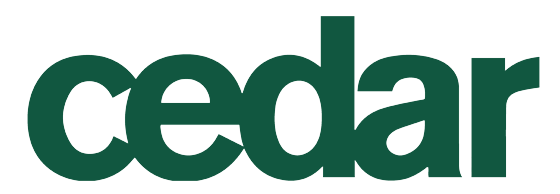Procurement’s New Balancing Act: Value, Resilience, ESG
In the wake of global disruptions and shifting corporate priorities, procurement leaders find themselves performing a high-stakes balancing act. Once viewed narrowly as cost cutters, today’s procurement functions are under expanding pressure to manage rising supply chain risks, meet intense ESG scrutiny, and deliver innovation and commercial value far beyond traditional savings targets. The role of procurement has never been more critical. In fact, recent surveys confirm procurement now holds an integral seat at the table, playing an essential part in enabling growth and driving value for the business (Procurement Magazine).
This insight-led overview explores how procurement is evolving from a tactical function to a strategic value creator, and what that means for resilience, sustainability, and talent in the private sector.
From Cost Cutter to Strategic Value Creator
For decades, success in procurement was measured by one primary metric: savings. Chief Procurement Officers (CPOs) took pride in negotiating lower prices and trimming budgets quarter after quarter. However, that old playbook is quickly wearing thin. While 79% of CPOs still rank cost savings as their number one KPI, a striking 61% of CEOs now say that innovation and supply resilience matter more to business outcomes (LinkedIn, McKinsey).
The message is clear, procurement can no longer be just the department of cost-cutting, it must become a driver of multi-dimensional value. Leading organisations are therefore expanding procurement’s mandate beyond unit price reductions. McKinsey notes that best-in-class CPOs are accelerating the function’s evolution from a traditional focus on savings to a broader agenda of value creation and resilience.
This means procurement is expected to contribute to innovation, revenue growth, risk mitigation, and competitive advantage, not just cost efficiency. One CPO described the shift succinctly: “Never before has procurement been core to so many executive-level priorities. We now have a real seat at the top table… this is how we will operate going forward” (McKinsey).
In practical terms, procurement teams are increasingly involved in strategy development, new product planning, and cross-functional initiatives, acting as true business partners rather than back-office buyers. The best CPOs today step up as strategic leaders, aligning procurement goals with broader business outcomes and bringing insight to corporate decision-making.
Resilience Over Risk: Building Supply Chain Strength
Global supply chain shocks, from the pandemic to geopolitical conflicts, have underscored that lowest-cost sourcing is worthless if it comes at the expense of reliability. Supply disruptions, inflation, and supplier insolvencies have made resilience a top-line mandate.
Procurement leaders overwhelmingly report that risk is “here to stay,” with over 70% witnessing a rise in procurement and supply disruptions in the past year alone (Deloitte). In Deloitte’s latest Global CPO Survey, 43% of CPOs said overall procurement risk had increased significantly compared to two years prior.
Issues like cost inflation and material shortages have hit hard, with 89% of procurement organisations citing inflation as having a high or moderate impact recently, and 79% citing supply shortages.
In response, procurement functions are shifting focus from pure cost improvement towards resiliency and agility in their supply networks. As McKinsey observes, an increasingly volatile world is forcing procurement to balance efficiency with resilience, diversifying supplier bases, rethinking inventory strategies, and collaborating with suppliers on continuity plans.
The most advanced procurement organisations are developing sophisticated risk dashboards, scenario planning capabilities, and closer partnerships with suppliers. Cedar’s own experience with clients shows companies are seeking procurement leaders who can blend commercial savvy with risk intelligence. The procurement playbook now requires a dual focus: continue to optimise costs, but not at the expense of supply continuity or quality.
Sustainability and ESG: From Obligation to Opportunity
Procurement is under intensifying ESG (Environmental, Social, and Governance) scrutiny. Consumers, investors, and regulators are all raising expectations for sustainable and ethical supply chains – and they are looking to procurement to drive this change.
Not long ago, sustainability was a side project for procurement, today it is a core strategic priority. In Deloitte’s 2023 Global CPO Survey, enhancing ESG was the second-highest enterprise priority, cited by 72% of CPOs (Deloitte).
External stakeholders expect companies to take responsibility for their supply base’s environmental and social impact. And since a company’s supply chain typically accounts for the bulk of its carbon footprint and ethical risk, CPOs are uniquely positioned to make a difference.
Forward-thinking procurement teams are now actively integrating ESG criteria into sourcing decisions, from choosing low-carbon materials and renewable energy suppliers to enforcing fair labour standards and diversity in the supplier base. According to McKinsey, procurement can take the lead in reducing value-chain emissions by securing in-demand green materials and collaborating on low-carbon innovations.
Strong ESG performance in the supply chain can safeguard brand reputation and improve resilience. Companies with robust sustainable procurement programmes have even been shown to enjoy higher customer satisfaction (LinkedIn).
Unilever’s sustainable procurement efforts helped 60% of its growth come from sustainable brands, while reducing supply chain emissions and improving profitability. The lesson is that sustainability and commercial value now go hand in hand.
Driving Innovation and Influence Across the Business
Beyond risk and sustainability, modern procurement is expected to be a powerhouse of innovation and broader business value. Instead of simply executing purchase orders, procurement is increasingly called upon to contribute to product development, revenue growth, and competitive strategy.
Deloitte’s survey underscores this change: supplier collaboration was rated the number one strategy for delivering value, with 61% of CPOs prioritising deeper supplier partnerships to unlock innovation.
McKinsey has found that close supplier collaboration can deliver up to ten times more value than traditional price-focused negotiations. Internally, procurement leaders are now interfacing regularly with R&D, operations, finance, and marketing to ensure sourcing choices support the company’s innovation roadmap.
The best CPOs act as influencers across the business, breaking out of siloed roles to advise on make-or-buy decisions and entering new markets with reliable supplier ecosystems. Top-performing procurement teams (“Orchestrators of Value,” as Deloitte calls them) engage far more with business leaders and are involved early in decision-making.
Procurement’s data on external spend and suppliers is increasingly tapped for strategic planning. KPIs are evolving to reflect broader value: time-to-market improvement, supplier-driven innovation, risk mitigation, and ESG impact.
Sourcing the Talent to Deliver on New Demands
Procurement’s responsibilities have broadened, but the talent gap is growing. Deloitte reports that talent acquisition and retention is the most cited internal risk, with over 70% of CPOs reporting difficulty attracting the skills they need.
Only 10% of top CPOs are fully confident their teams can deliver on strategy (Procurement Magazine). Businesses are now competing for professionals who can integrate systems, interpret complex data, engage suppliers on innovation, and drive cross-functional change.
Cedar’s Procurement practice is seeing a surge in demand for procurement leaders who can deliver on resilience, sustainability, and innovation simultaneously. Whether it’s a transformative CPO, an interim risk project lead, or an ESG-focused category manager, we help businesses build the teams to meet these modern challenges.
Our consultative approach ensures we identify talent that combines commercial expertise with strategic mindset and agility. Recent placements include digital procurement architects, ESG-focused sourcing leads, and interim transformation consultants. Each one brings a forward-looking approach, focused on value.
Conclusion
Procurement’s role is no longer just about cost control. Today, it is central to business strategy, delivering value through innovation, resilience, ESG, and talent. As procurement balances these growing demands, businesses must ensure they have the right people in place to lead the way.
Cedar is ready to support that journey, helping you source procurement talent who can thrive in this new era. If you are looking to strengthen your procurement function or hire next-generation leaders, speak to our team today.


